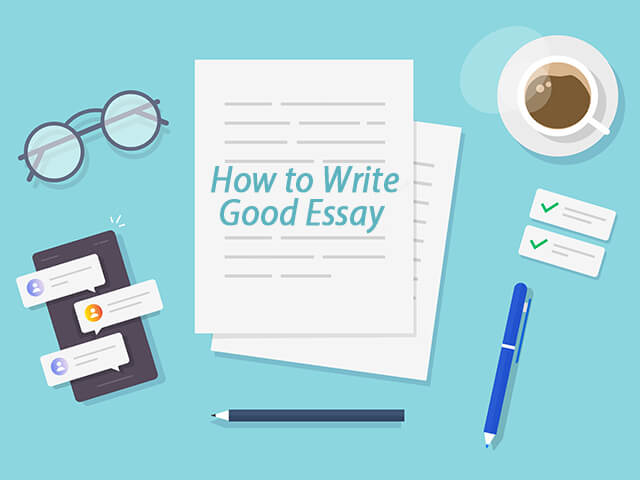In the world of writing, the opening lines of an essay are like a firm handshake – they establish the initial connection and set the tone for the entire conversation. It’s a truth universally acknowledged that an attention-grabbing start can make all the difference. Whether you’re a seasoned wordsmith or just dipping your toes into the vast ocean of writing, mastering the art of essay introductions is a skill worth cultivating. Picture this: you’ve got a brilliant idea, a captivating topic that’s ready to be explored, and now all you need is that spark to ignite your reader’s curiosity. Fear not, because in this article, we’ll be diving into the secrets of crafting an engaging essay introduction that leaves a lasting impression. So, if you’ve ever wondered how to make your words dance off the page and grab your reader’s attention from the get-go, you’re in the right place. Get ready to embark on a journey of writing magic, as we unravel the mysteries of captivating introductions together.
Now, let’s address the elephant in the room – starting an essay can sometimes feel as daunting as scaling a literary Everest. But the paper writers at Domypaper.com have your back. Whether you’re facing a blank page or simply seeking to sharpen your skills, we’re here to guide you through the intricacies of crafting an introduction that shines. This article is your compass, your treasure map to crafting introductions that not only introduce your topic but also sweep your readers off their feet and into the heart of your narrative. We’ll delve into the art of capturing attention with a compelling hook, weaving context to frame your narrative, and crafting a thesis statement that guides the way. So, whether you’re tackling a persuasive essay, a reflective piece, or a research-driven exploration, we’re about to unveil the secrets that will make your essay introductions a force to be reckoned with. Ready to embark on this journey? Let’s dive in!
Crafting a Compelling Hook
At the heart of every captivating essay introduction lies the art of crafting a compelling hook. Consider this hook as your literary bait, strategically cast into the vast ocean of words to reel your reader in. It’s that initial sentence or two that not only commands attention but also seduces the reader into wanting more. Think of it as a literary handshake that says, “Welcome, intrigued reader. You’re about to embark on a journey that will challenge, enlighten, and delight.” The hook is where you plant the seeds of curiosity, inviting your audience to stay and explore the fertile landscape you’ve prepared for them.
When it comes to crafting hooks, versatility is your ally. Just as a painter wields different brushes to create varying textures, writers have an array of hook types at their disposal. Anecdotal hooks whisk readers away into a personal story, igniting empathy and relatability. Rhetorical hooks pose thought-provoking questions that linger like a whisper in the reader’s mind, urging them to uncover answers. Statistical hooks, armed with facts and figures, appeal to logic and the analytical mind. They can be found in the most unexpected places – from the opening of a political commentary to the beginning of a heartwarming narrative. The magic lies in choosing the hook that aligns with your essay’s essence and message. For instance, if you were to craft an essay on climate change, a staggering statistic about rising global temperatures could seize your reader’s attention like a climactic plot twist. As top essay writing services often emphasize, the secret sauce to a memorable hook lies in its ability to resonate, surprise, and encapsulate the essence of your essay – all within the span of a few lines.
Establishing Context and Relevance
In the vast realm of essay writing, context is like the compass that guides your reader through uncharted intellectual territories. Imagine embarking on a journey without a map – context provides the landmarks, the signposts, and the navigational aids that help your reader understand the lay of the land. It’s the subtle yet vital tool that allows you to bridge the gap between your thoughts and your reader’s understanding. Whether you’re discussing the intricacies of quantum physics or delving into the nuances of Shakespearean tragedy, providing context ensures that your reader doesn’t feel like a wanderer lost in a labyrinth. Instead, they become a curious traveler, eager to explore the territory you’ve thoughtfully illuminated.
Introducing context is akin to weaving a tapestry of relevance that envelops your essay’s core theme. It’s the moment when you say, “Let’s embark on this journey together, and here’s why it matters.” One effective way to do this is by painting a vivid scene – much like a cinematographer capturing the opening shot of a film. Consider immersing your reader in a scenario, a historical event, or a relatable anecdote that mirrors the essay’s central theme. By grounding your reader in the here and now, you not only create a relatable entry point but also set the stage for the unfolding narrative. Moreover, as the tapestry extends beyond the confines of your essay, consider threading the theme into the broader fabric of societal issues or personal experiences. This connection is where the magic happens. Just as a skilled conductor synchronizes an orchestra’s symphony, you orchestrate an essay that resonates with resonance and harmony.
Formulating a Clear Thesis Statement
At the heart of every essay lies a compass – a thesis statement that guides both writer and reader through the intricate terrain of ideas. Think of it as the North Star, an unwavering point of reference that ensures you stay on course as you navigate the vast expanse of your essay. The thesis isn’t just a sentence; it’s a strategic beacon that illuminates the path you intend to tread. It encapsulates the essence of your argument, the crux of your exploration, and the magnetic force that draws your reader deeper into your intellectual journey.
Crafting a thesis statement is a delicate art, akin to sculpting a masterpiece from a block of marble. It’s about distilling complex concepts into a succinct yet powerful declaration that encapsulates your essay’s purpose. A well-crafted thesis serves as a roadmap, guiding both you and your reader through the labyrinth of ideas you’re about to unveil. To chisel your thesis into shape, begin by identifying the core theme or argument of your essay. Think of it as the thesis’s beating heart – the driving force that infuses life into your words. From there, sculpt your thesis into a sentence or two that not only outlines your main points but also asserts a clear and debatable stance. It’s the intersection of focus and contention, where the magic of thought-provoking discourse is born.
As you carve your thesis into its refined form, ensure that it aligns harmoniously with the essay’s overarching purpose and direction. Just as a composer weaves melodies that resonate with a symphony’s theme, your thesis should harmonize with the symphony of your essay. Be vigilant in avoiding vague, generic statements that lack depth and clarity. Instead, opt for a thesis that boasts both precision and potency. Imagine a finely honed arrow – each word propels your reader towards a deeper understanding of your argument. By crafting a thesis that resonates with clarity and intent, you embark on an intellectual journey that promises not only to engage your reader but also to ignite the flames of curiosity and exploration.
Conclusion
In the world of essays, the introduction is your grand entrance onto the stage of ideas, your chance to captivate the audience from the first moment. As we bid adieu to our journey through the art of essay beginnings, let’s reflect on the gems of wisdom we’ve uncovered. Crafting a compelling hook isn’t just about catching attention; it’s about weaving intrigue and creating an irresistible promise of what’s to come. Whether you choose an anecdote that tugs at heartstrings or a statistic that startles the mind, your hook is the red carpet that leads readers into the heart of your discourse.
Yet, a captivating start doesn’t stand alone; it’s interwoven with context and relevance, a tapestry that paints the backdrop of your essay’s narrative. Plunging your readers into the thick of things requires a deft hand, a way of presenting the bigger picture while allowing them to smell the roses along the way. And let us not forget the thesis statement – the lighthouse that guides your reader through the labyrinth of ideas, illuminating the path you’ve chosen. Think of it as a torchbearer, lighting the way through the intellectual darkness and revealing the treasures hidden within.
As you embark on your own essay-writing adventures, remember that the journey matters as much as the destination. An engaging introduction isn’t merely an entrance; it’s a handshake, a promise, and an invitation to embark on a voyage of discovery. Armed with the tools to craft a captivating hook, to set the stage with context, and to frame your essay with a compelling thesis, you’re equipped to embark on this odyssey of words. So, go forth, fellow essay explorers, and may your introductions shine bright, drawing readers into the world of your ideas with the irresistible allure of a well-crafted overture.





